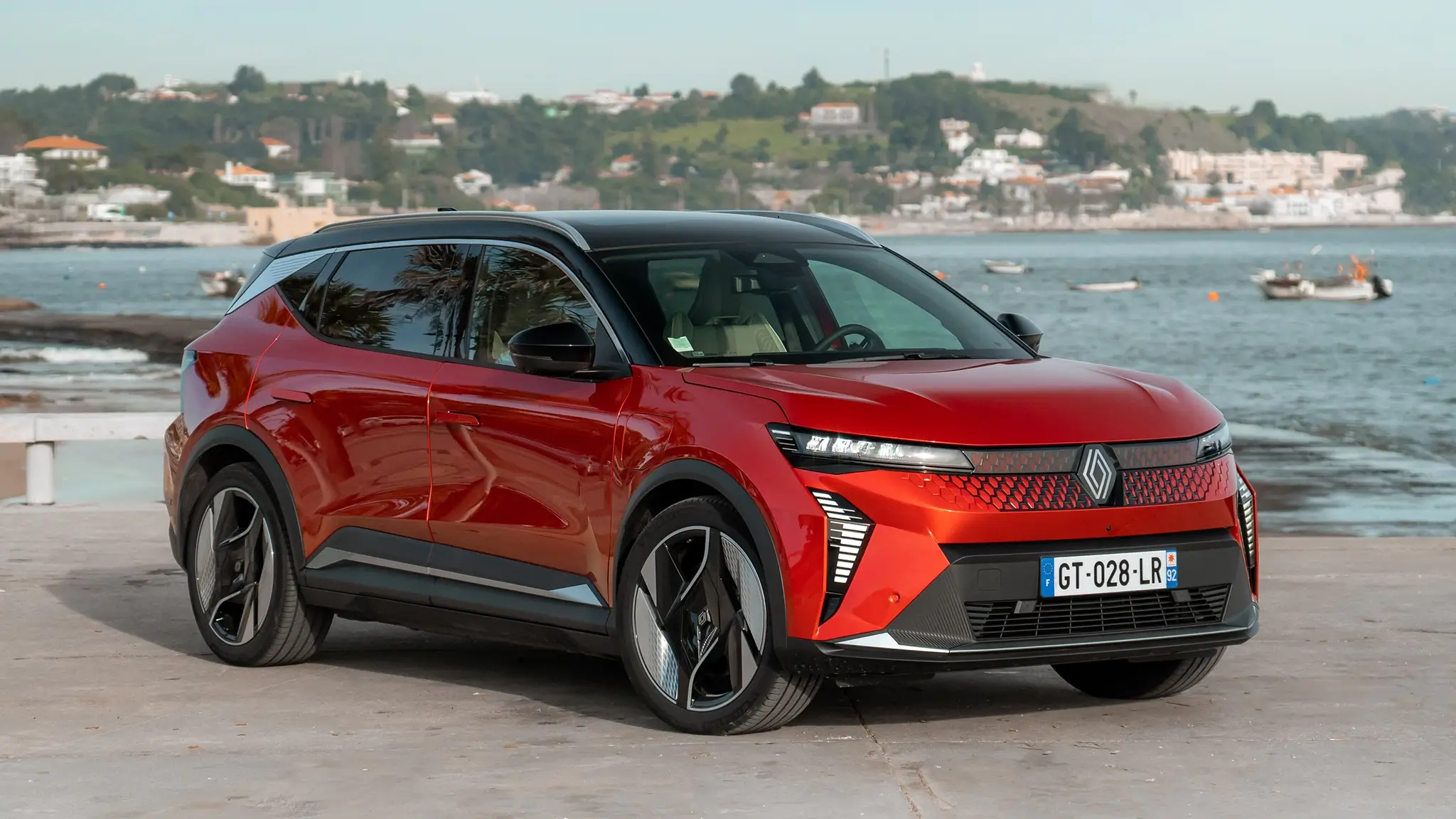The Scenic is the latest Renault to go crossover…and electric. We were the first to drive the new model in Portugal.
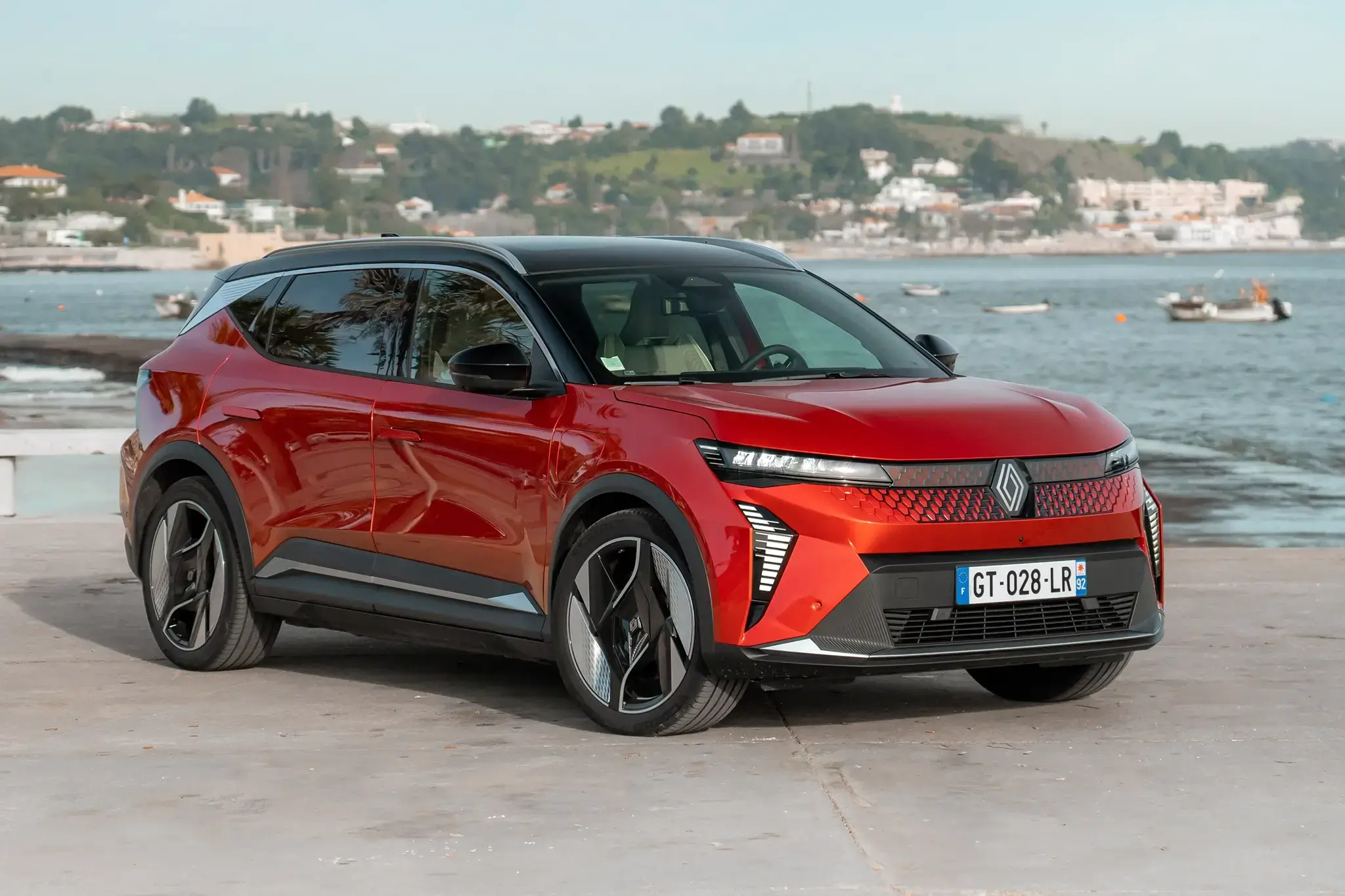

Renault Scenic E-Tech Electric 87 kWh
It's now a Renault Scenic Crossing electrical. It's time to see if it's still the right car for families.
Positives
- Intuitive infotainment
- Space in the second row of seats
- Luggage compartment volume
cons
- Inconsistent braking
- Light and “industrial” steering.
- High consumption
After 28 years of marketing and five generations,… Scenic Reno He surrenders to the evidence and transforms his external form and internal concept into Crossingin denial of its young roots.
Structurally, it is very close to the Megane E-Tech, but longer (6cm), wider (10cm) and, most importantly, taller (27cm). The wheelbase has also been extended by 10 cm. Ground clearance would also be the same, if not for the larger diameter of the Scenic wheels, which ultimately creates a two-centimetre difference between the two models.
As in most modern electric cars, the Scenic 100% electric battery is mounted under the car's floor, between the two axles.
The unit tested – which was sent from Paris to Lisbon specifically for this dynamic experiment, as part of the European Car of the Year election, being one of the finalists – has a capacity of 87 kWh. It's the largest available in the range, and the smallest is 60 kWh.
This battery is produced by LG Chem and “promises” a maximum range of 625 kilometers, and can be charged with 22 kilowatts of alternating current (AC) or 150 kilowatts of direct current (DC).
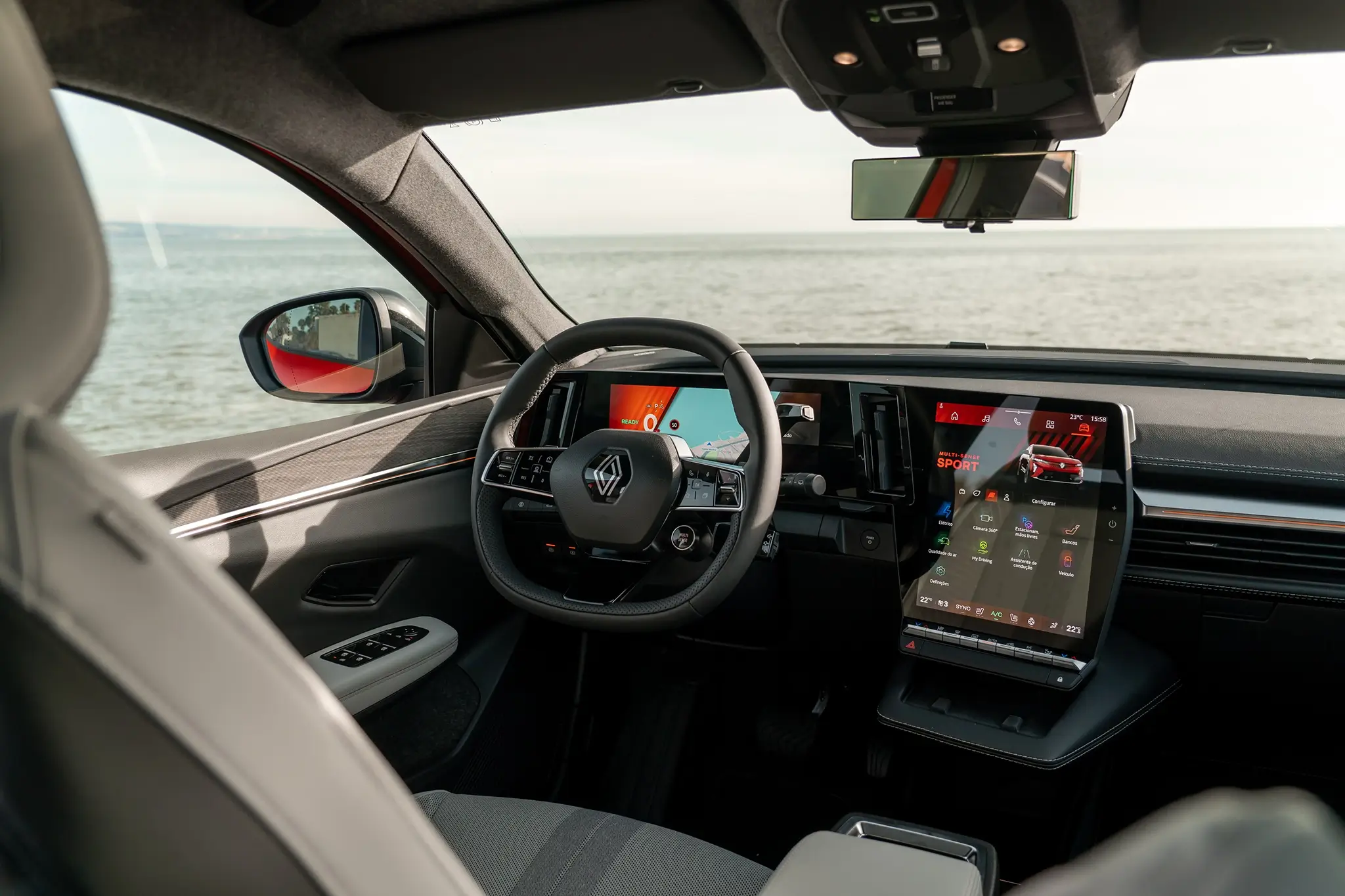

A more technological scene
The configuration, elements and different technology used in the dashboard are in line with what we know from the Megane E-Tech and Espace. Intuitive Android operating system, with native Google apps (such as Maps, Assistant, etc.) play store), makes the task much easier for those who use mobile devices with this “genetic code”.
Moreover, the presence of this solution also greatly simplifies voice communication with the car (excellent understandability). The system is also fully compatible with Apple devices, with or without a cable.
The digital instrument display and the central screen dedicated to the infotainment system are approximately the same size (12.3 inches and 12.0 inches, respectively). However, while the first is horizontal, the second is positioned vertically and directed slightly towards the driver.
The (dated) satellite leg that controls the audio system and mounted on the steering column looks like a fish out of water in the context of this modern interior, in the same way that the absence Head width.
Fortunately, the physical controls for the climate control and other commonly used functions have been preserved, preventing us from having to search for them in menus on the center screen.
The dashboard covers are mostly solid (this top version has synthetic leather), giving an overall impression of only average quality. Interestingly, the door pockets have inner lining (unusual in this segment), but the rear ventilation outlets only allow you to adjust the direction of airflow.
The Renault Scenic's rear view is limited by the narrow rear window and wide C-pillars, which makes the rearview camera very useful.
Ample space on board
Space in the front seats is generous and unobstructed, especially since the transmission and drive mode selectors are now located on the steering wheel.
Thanks to the new Scenic's massive wheelbase, the cabin has very generous legroom in the second row of seats, even for passengers taller than 1.80 meters (and the legs are identical).
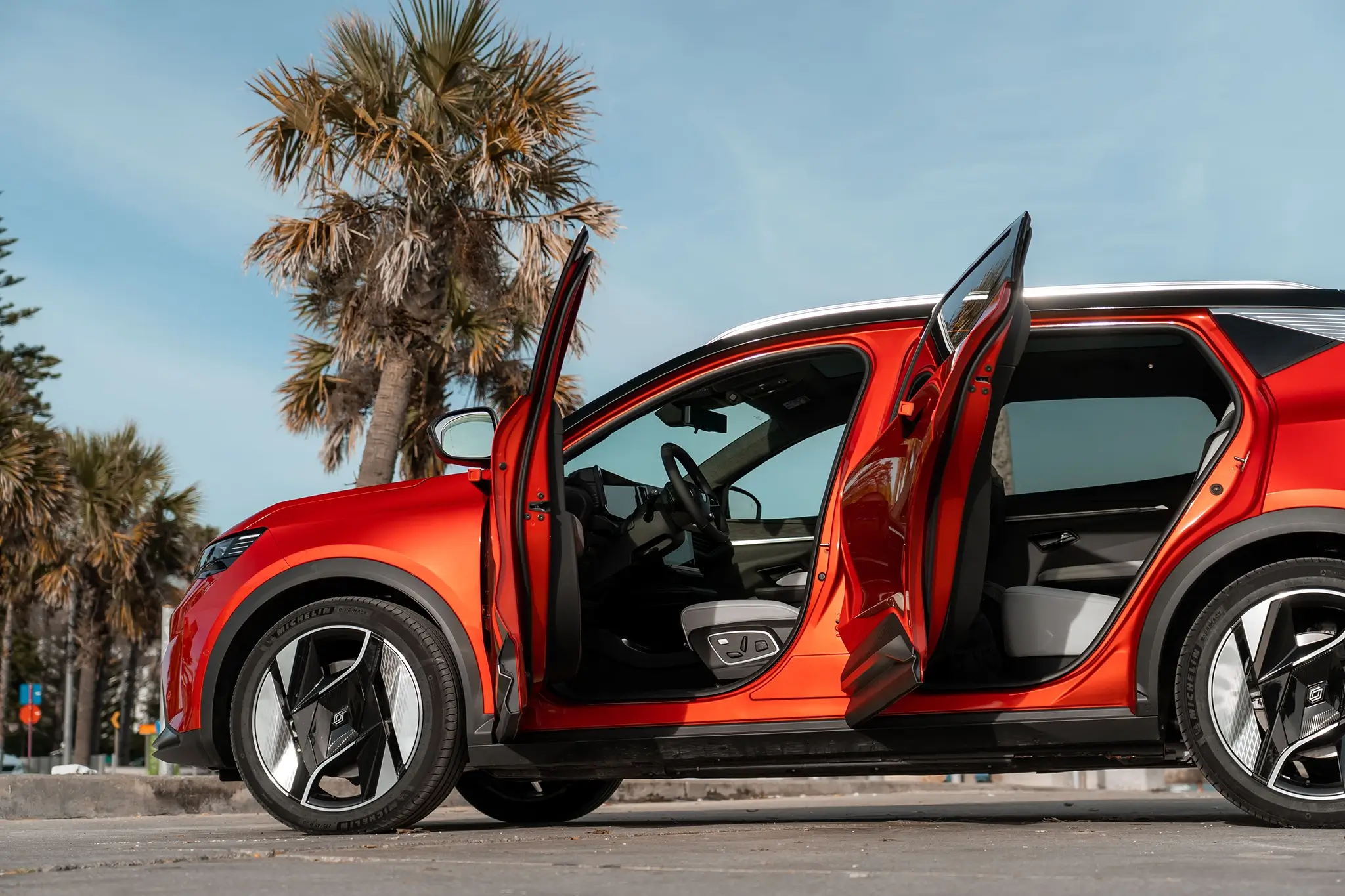

The floor is flat in the middle, providing freedom of movement for those sitting there, although this place has the usual narrower seat and stiffer back. Applause also goes to the rear center armrest which on the inside includes a cover and bars for holding tablets, drink holders and USB sockets.
As an option, there could be a panoramic roof of variable opacity (through a system of liquid crystals), which could be more opaque in the front row and more transparent in the rear, or vice versa.
It is worth noting the luggage compartment capacity, which at 545 litres, is the highest in its class, although there is 50 liters under the hatch in the floor. On the other hand, the large step between the loading compartment and the loading level is impractical for loading or unloading larger and heavier quantities.
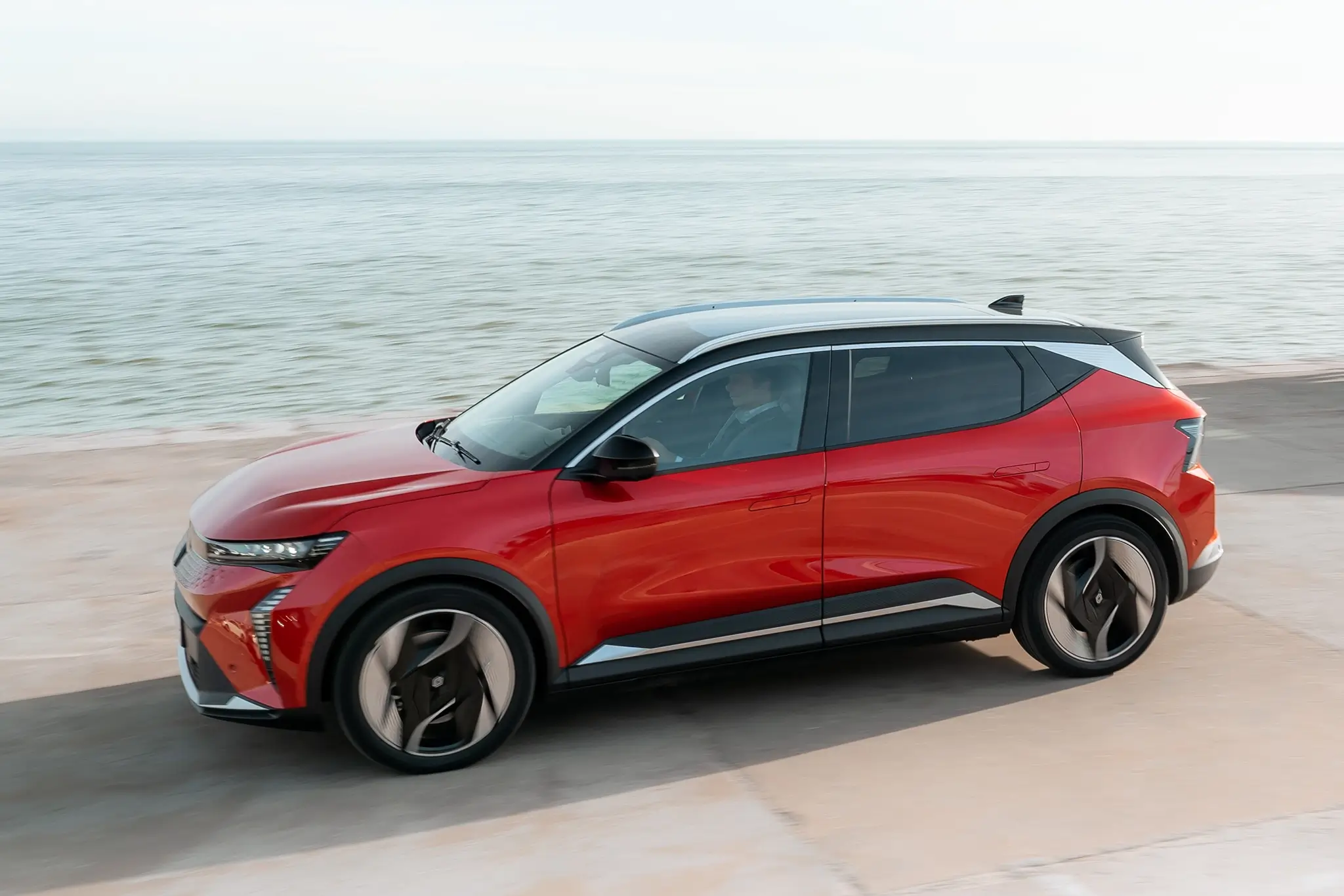

Rest “versus” dynamic behavior
The suspension is independent at all four wheels and the electric motor is mounted up front, with no all-wheel drive version planned. As is the case with units tested three months ago Paristhis scenic car that came to visit Lisbon had huge 20-inch wheels, surrounded by 235/45 tires.
Together with the always heavy battery, it makes the car behave quite dry – very difficult on bad surfaces – but with the usual more positive aspect, which is very good stability when driving faster in a series of curves.


The response of the 160 kW (218 hp) engine is ready and powerful, especially in Comfort and, above all, Sport mode. Together with Eco and Perso, they make up the four available driving modes, which can be selected via a button on the face of the steering wheel.
Room for improvement
The two less successful aspects of the new Renault Scenic's dynamics are braking and steering feel. In the first case, there seems to be no feedback from the brakes at the start of the pedal travel, and even after they get going, the feeling remains quite 'spongy'. In other words, it's not the best feeling to control more than 1.8 tons of a car.
The steering always feels too “artificial” and light, putting too much distance on the driver's relationship with the road. It varies from light (in Sport mode), very light (in Normal mode), and very light (in Economy mode).
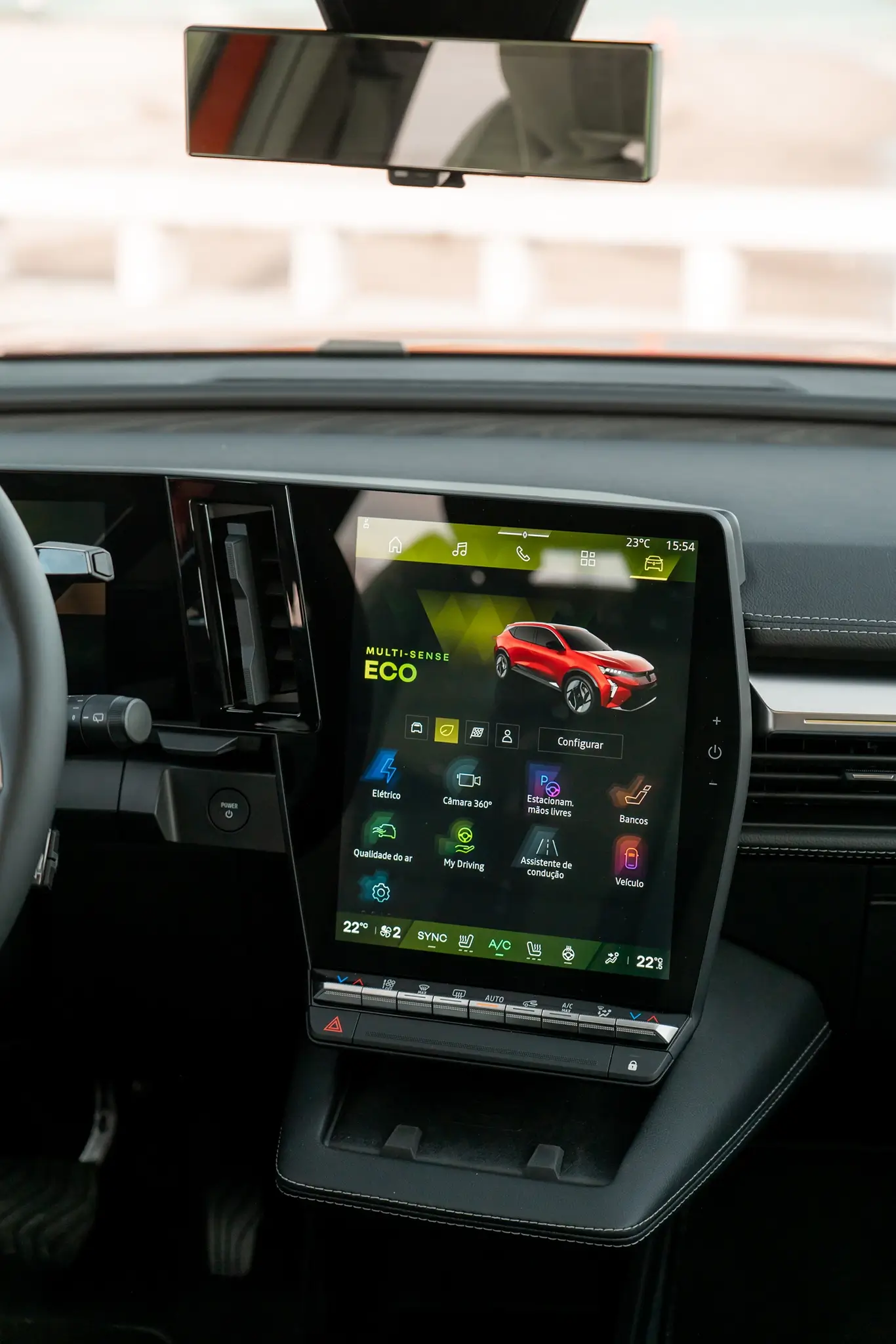

There are also three deceleration/energy recovery intensity levels, selectable via paddles behind the steering wheel, but with relatively little variation between them.
Furthermore, there is no “single pedal push” function, which means that the Scenic does not come to a complete stop after releasing the accelerator, without applying the brake.
Consumption above expected
As in Paris, the Scenic's consumption in Lisbon was higher than expected, taking into account the declared value of 16.8 kWh/100 km.
Even taking into account that in the test you always drive in a more demanding way than in everyday life, the claimed 21.3 kWh will not allow a range of more than 400 km, even in this version equipped with a higher capacity battery.
The on-board computer always indicates two values for the remaining range: a lower value indicates fast highway driving; And another higher one if the remaining trip is carried out in urban areas. For example, we can state that at one point of the test, when the battery was 73%, we had 337 kilometers “in our pocket”, which could be reduced to 251 kilometers on the highway or extended to 462 kilometers in the city.
Discover your next car:
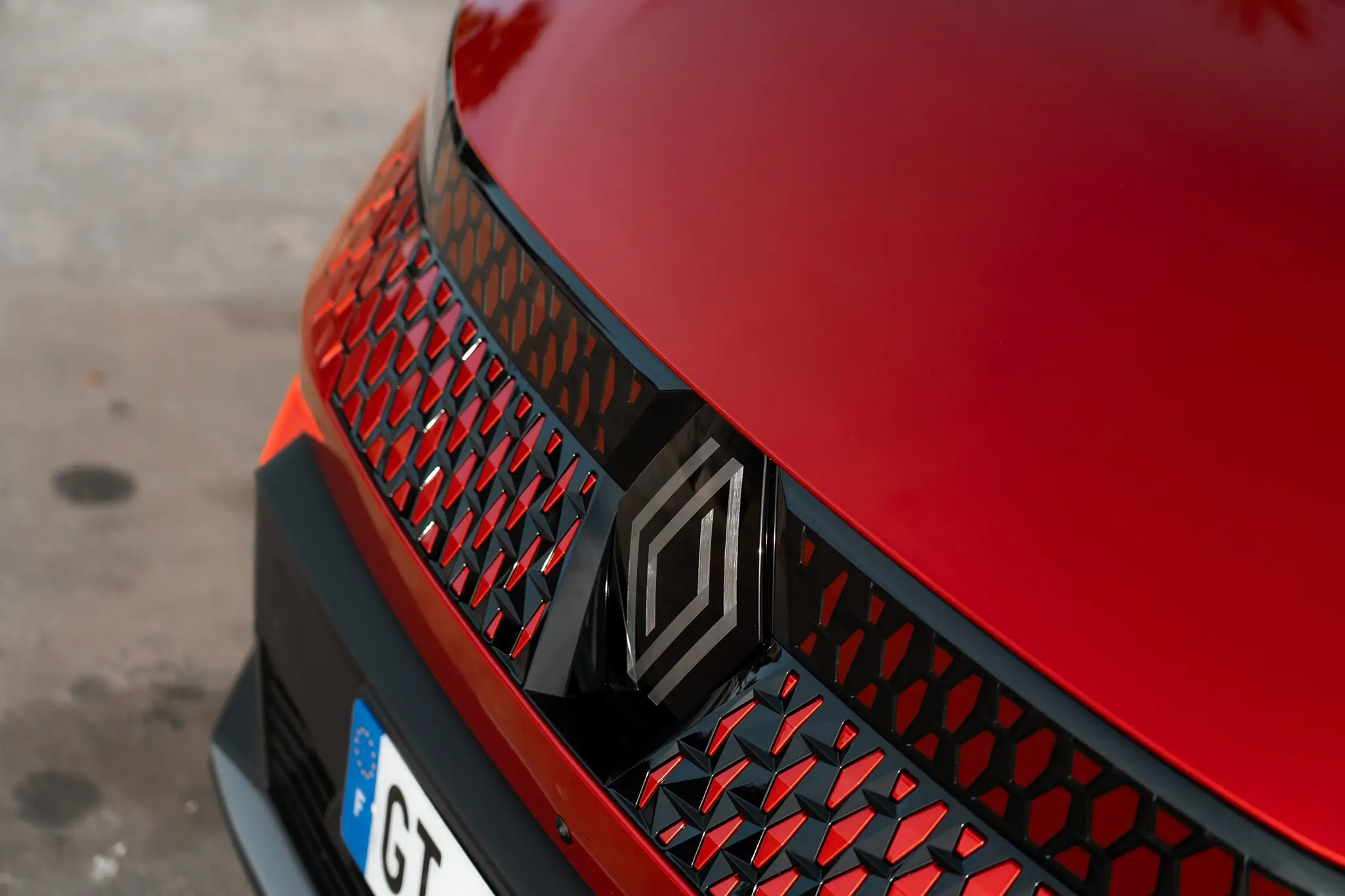

Landscapes of Portugal
For the national market, prices for the new Renault Scenic start at €40,690 for the Evolution version, but with a 125 kW (170 hp) engine and 60 kWh battery, which advertises a maximum range of 430 km. Alternatively, there is a Tecno version priced at 43,490 euros, which is equipped with the same electrical system and battery.
For the most powerful version (218 hp) with the largest battery (87 kWh), like the unit we had the opportunity to drive, there are four equipment levels available: Evolution, Techno, Esprit Alpine and Iconic. In this case, prices range between 49,300 euros for the Evolution and 52,650 euros for the Iconic, which you can see in this test.
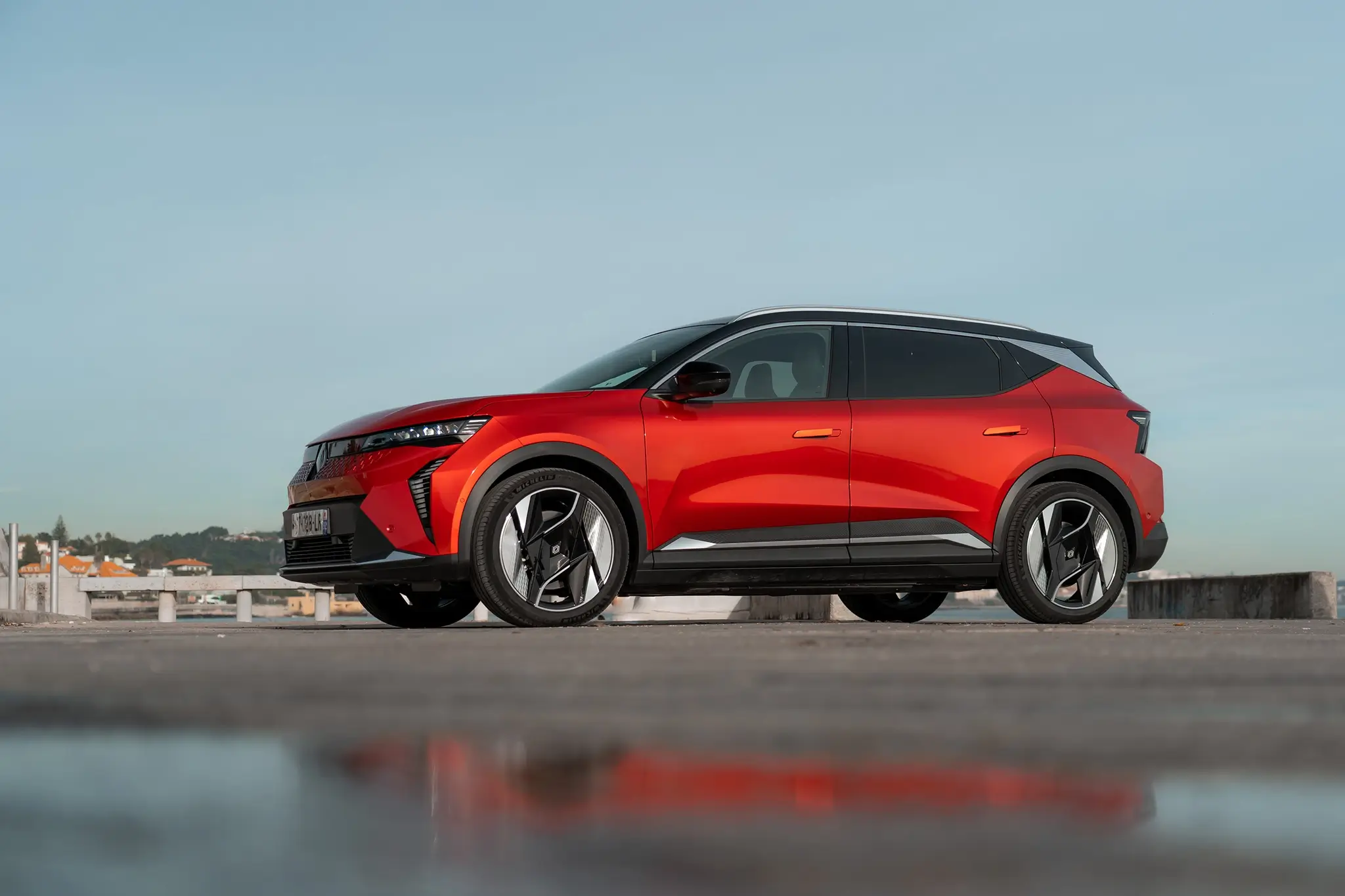

In the case of the most powerful version, prices are in line with what will likely be its biggest rival, the new Peugeot e-3008, in its 157 kW (213 hp) version with a 73 kWh battery. It's smaller than the Scenic's 87kWh, which loses 100km of autonomy: 525km versus 625km.
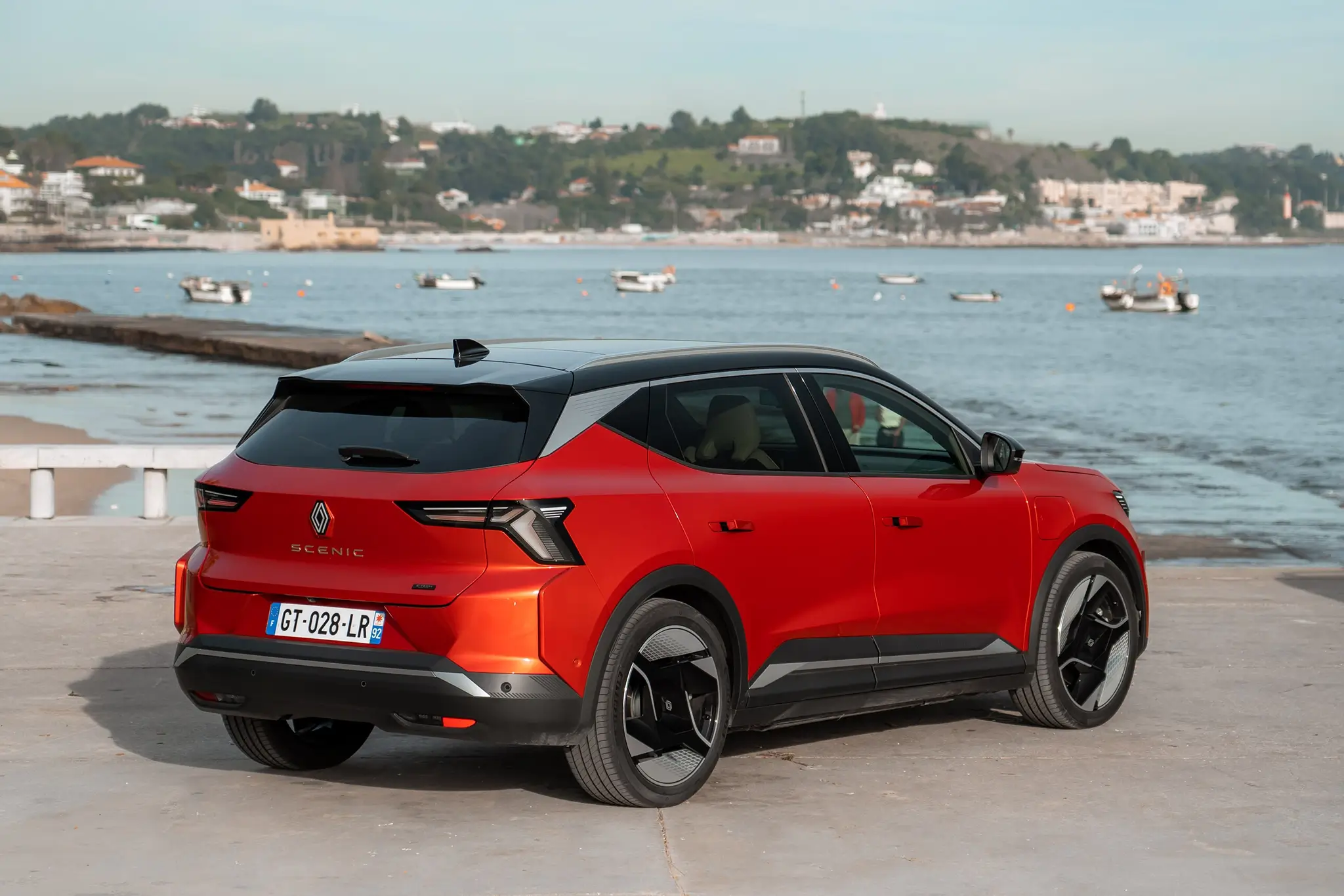

Judgment
Renault Scenic E-Tech Electric 87 kWh
The now scenic electric crossover continues to live up to the familiar roll we associate with the name. There's room for everything, even if the amenities — in this version with 20-inch wheels — aren't the typical expensive comfort we're used to. It makes up for this with good performance and competent dynamics, although steering and braking feel have room for improvement.
Positives
- Intuitive infotainment
- Space in the second row of seats
- Luggage compartment volume
cons
- Inconsistent braking
- Light and “industrial” steering.
- High consumption
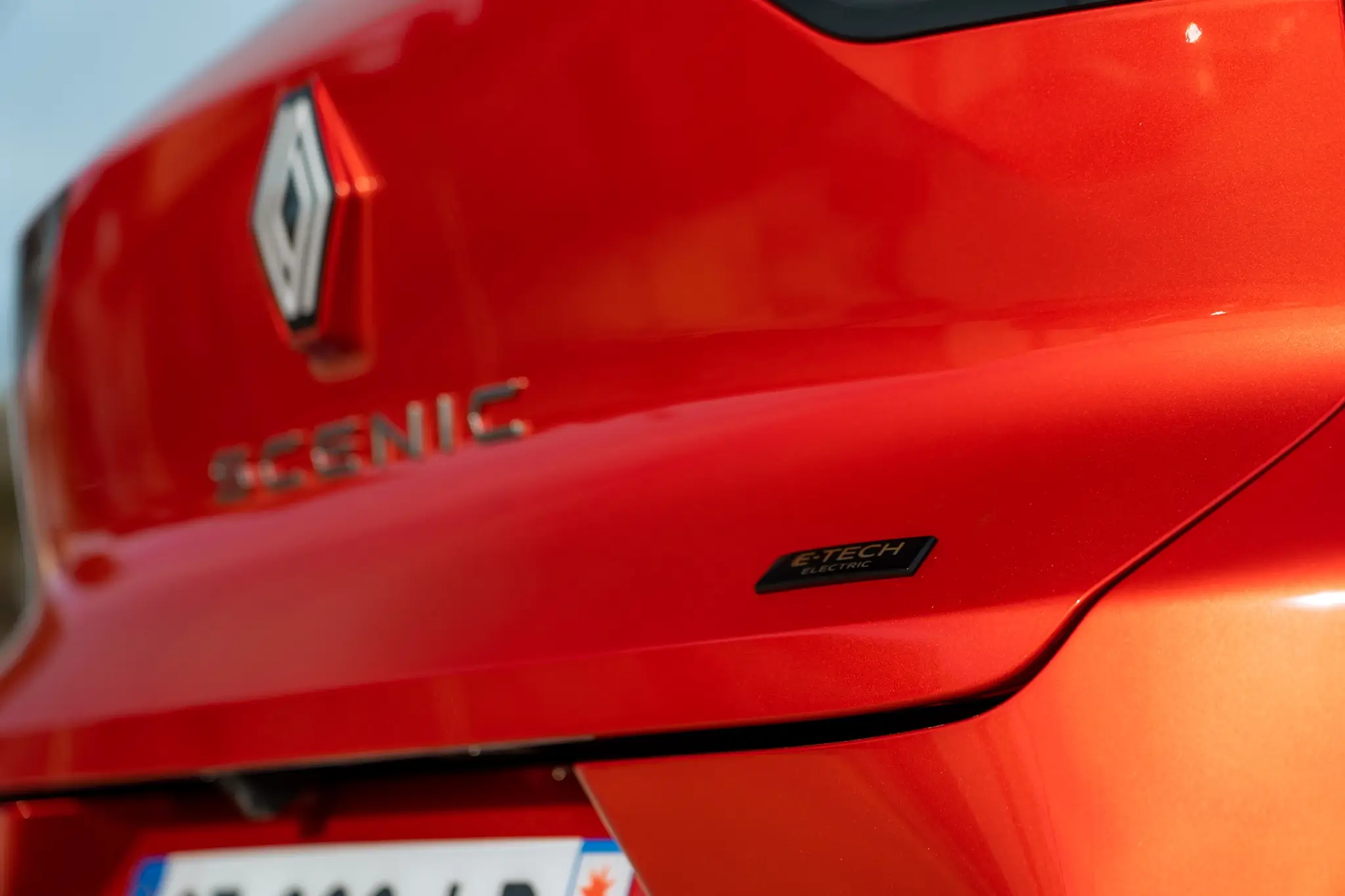

Technical Specifications
Basic version:49,300 euros
Euro NCAP classification:
- building: Electrical engine
- position:Transverse front
- download: Battery: 87 kWh (NMC Lithium-Ion)
- power: 160 kW (218 hp)
- Binary: 300 Nm
- popularity: straight ahead
- Motion vector: Reduction Fund (1 ratio)
- an offer: 4447 mm
- Length: 1864 mm
- to rise: 1571 mm
- Distance between axes: 2785 mm
- Luggage compartment: 545-1670 litres
- Wheels/tyres: 235/45 R20
- Weight: 1850 kg
- Average consumption: 16.8 kW/100 km; Range: 625 km
- maximum speed: 170 km/h
- Maximum acceleration: > 8.4 seconds
- Heated front seats and steering wheel
- Dual-zone automatic air conditioning
- Induction smartphone charger
- Compatibility with Android Auto and/or Apple CarPlay
- Full LED headlights
- 20-inch alloy wheels
- Cabin air purifier
- Distinctive Harman Kardon audio system
- openR Link multimedia system with 12-inch display and built-in Google
- Adjustable regenerative braking (4 levels) via paddles on the steering wheel
He has:

“Wannabe internet buff. Future teen idol. Hardcore zombie guru. Gamer. Avid creator. Entrepreneur. Bacon ninja.”

